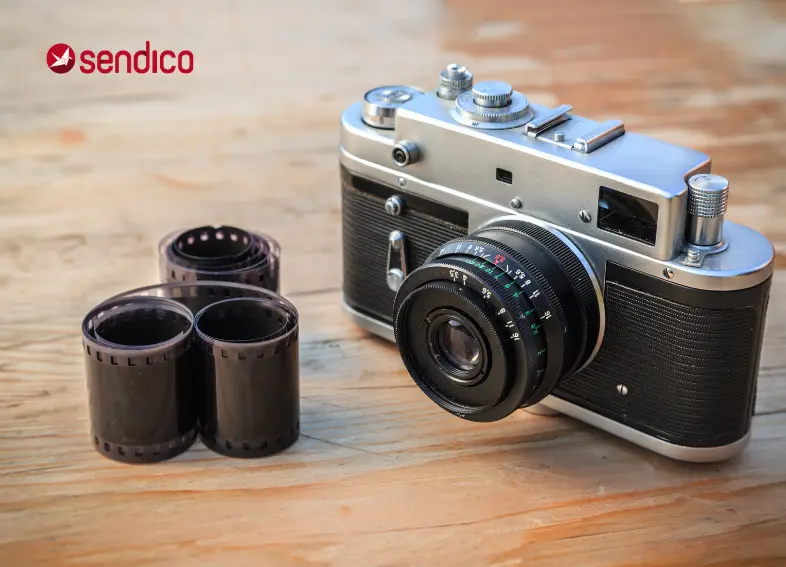
The Japanese camera industry has left an indelible mark on the global market, not only for its innovative technology but also for its rich history and significant contributions to the world of photography. From the early 20th century to the present day, Japanese camera manufacturers have continually pushed the boundaries of imaging technology, shaping the way we capture and preserve moments in time.
Sign Up Now!
Early Beginnings and Pioneering Innovations
The roots of the Japanese camera industry can be traced back to the early 20th century when companies like Nikon, Canon, and Olympus began to emerge. In 1917, Nikon, then known as Nippon Kogaku K.K., was founded in Tokyo, initially specializing in optical instruments. The company's first camera, the Nikon I, was introduced in 1948, marking the beginning of its journey as a leading camera manufacturer.
Canon, another iconic name in the industry, was founded in 1937 as Precision Optical Instruments Laboratory. It produced its first camera, the Kwanon, in 1934, named after the Buddhist goddess of mercy. Over the decades, Canon became synonymous with cutting-edge camera technology, pioneering advancements such as autofocus and digital imaging.
Olympus, founded in 1919 as Takachiho Seisakusho, initially focused on manufacturing microscopes and thermometers. However, it ventured into the camera market in 1936 with the launch of the Semi-Olympus I, its first camera. Olympus would later gain widespread acclaim for its innovative compact cameras, such as the Olympus Pen series.
Rise to Prominence and Global Dominance
The post-World War II period marked a significant turning point for the Japanese camera industry. With the devastation of the war behind them, Japanese manufacturers embraced innovation and rapidly expanded their market reach. Canon's introduction of the Canonet in 1961, a compact, fully automatic camera, was a game-changer that appealed to amateur photographers worldwide.
During the 1970s and 1980s, Japanese camera companies further solidified their dominance with the introduction of SLR (Single Lens Reflex) cameras equipped with advanced features like autofocus and integrated circuitry. Nikon's F-series SLRs and Canon's EOS line became iconic symbols of Japanese engineering prowess and set the standard for professional photography equipment.
Challenges and Adaptations in the Digital Age
The advent of digital photography in the late 20th century posed both challenges and opportunities for the Japanese camera industry. While traditional film-based cameras faced obsolescence, Japanese manufacturers quickly adapted to the digital revolution. Nikon and Canon, in particular, emerged as leaders in digital camera technology, producing DSLRs (Digital single-lens reflex) that offered superior image quality and performance.
However, the rise of smartphones with increasingly sophisticated built-in cameras presented a new set of challenges for the traditional camera industry. Sales of compact point-and-shoot cameras declined as consumers opted for the convenience of capturing moments with their smartphones. In response, Japanese camera manufacturers shifted their focus towards producing high-end DSLRs and mirrorless cameras targeting professional and enthusiast photographers.
Continued Innovation and Global Influence
Despite facing stiff competition and evolving consumer preferences, the Japanese camera industry remains at the forefront of innovation. Companies like Sony have disrupted the market with their mirrorless camera systems, offering compact yet powerful alternatives to traditional DSLRs. FujiFilm has carved out a niche with its retro-styled mirrorless cameras, appealing to photographers who value both aesthetics and performance.
Moreover, Japanese camera manufacturers continue to invest in research and development to stay ahead of the curve. From advancements in sensor technology to improvements in image stabilization and connectivity features, the Japanese camera industry continues to push the boundaries of what is possible in photography.
Conclusion
The history of the Japanese camera industry is a testament to the spirit of innovation and ingenuity that has defined the country's manufacturing sector. From humble beginnings to global dominance, Japanese camera manufacturers have continually adapted to changing market dynamics, shaping the evolution of photography along the way. As we look towards the future, it is clear that the Japanese camera industry will remain a driving force in the world of imaging technology.

Similar Articles
.webp)


